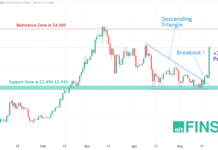Blockchain Public blockchain, the pioneer form of blockchain, introduced in 2008 by an entity identified as Satoshi Nakamoto, brought many innovations into the financial world. Most notably, it created the first decentralized Peer-To-Peer payment system and boosted financial transparency and security in money transactions. Bitcoin, Ethereum, Dash, and most exchange-traded cryptos all run on a public blockchain. One peculiarity with public blockchain is the liberty it gives to users of its platform.
Some of the problems of conventional banking systems are its high fee charges, delay in processing transactions, and geographical limitations. Blockchain came as an attempt to render solutions to these limitations, but can public blockchain replace conventional banking? The answer is certainly no.
Removal of intermediaries in financial transactions may be a good thing, but public blockchains are yet to attain the perfect standard we desire. For instance, though a little faster than conventional banking, it is still relatively slow. Moreover, there are energy concerns for those who employ the Proof of Work consensus algorithm. Also, the anonymity public blockchains offer has been repeatedly misused for criminal activities like money laundering and a means of ransom from kidnappers and hackers.
With these setbacks came private blockchains. Private blockchains became a reversal from the decentralized ecosystems to a more centralized one. Private blockchains try to maintain transparency by leaning towards decentralization. They are controlled by a central authority, either an individual or an organization. Although information about transactions is kept private from the public, with proper permission they can be accessed.
Advantages private blockchains have over public are their greater transaction speed and more privacy (as the name implies). Consequently, private blockchains have greater acceptance among businesses, corporations, and governments. Its nature is very private, as only a specific group of people are allowed into its ecosystem. Approval would be based on application or adherence to pre-set rules; it comes with greater efficiency when compared to the public blockchain.
The potential brought by private blockchain is highly appreciated. It’s fast, enterprise-specific features are a great leap, however, its centralized nature is a cause for concern. Being controlled by individuals or organizations reduces trust and goes against the principles of decentralization.
While both public and private blockchains have their advantages and disadvantages, none can as yet serve as a 100% solution to payment methods.
This brings us to the discussion on consortium blockchain also called Federated Blockchain, a hybrid of public and private blockchain. Consortium blockchain is partly public and partly private. It is built on the benefits of both public and private blockchains, while filtering their limitations. A comparison of the three would show consortium blockchain has the highest transaction speed.
So far, Consortium Blockchain has been mostly used in the banking sector. Although still in its early stage, there are a few projects already using Federated or Consortium Blockchain. Like the R3, the coming together of banks like Temasek, SBI Group, Bank of America, Merrill Lynch and Intel, Fargo and ING, all of which are control nodes.
Vitalik Buterin, Co-founder of Ethereum, had this to say on consortium blockchain:
“So far, there has been little emphasis on the distinction between consortium blockchains and fully private blockchains, although it is important: the former provides a hybrid between the ‘low-trust’ provided by public blockchains and the ‘single highly-trusted entity’ model of private blockchains, whereas the latter can be more accurately described as a traditional centralized system with a degree of cryptographic auditability attached.”
Consortium blockchain platforms are somewhere in between centralization and decentralization. The consortium ecosystem is controlled by a group of trusted individuals or groups; consider it as a coming together of trusted individuals or group to form a democratic government that would govern the ecosystem.
The consortium blockchain is closer to the private blockchain by nature, but unlike the private blockchain, it is controlled by a group. This collaboration by groups rather than a single entity would make consortium blockchains more democratic, improve its trust and, unlike public blockchain, the control of the ecosystem is not left in the hands of anybody with access to the internet.
















